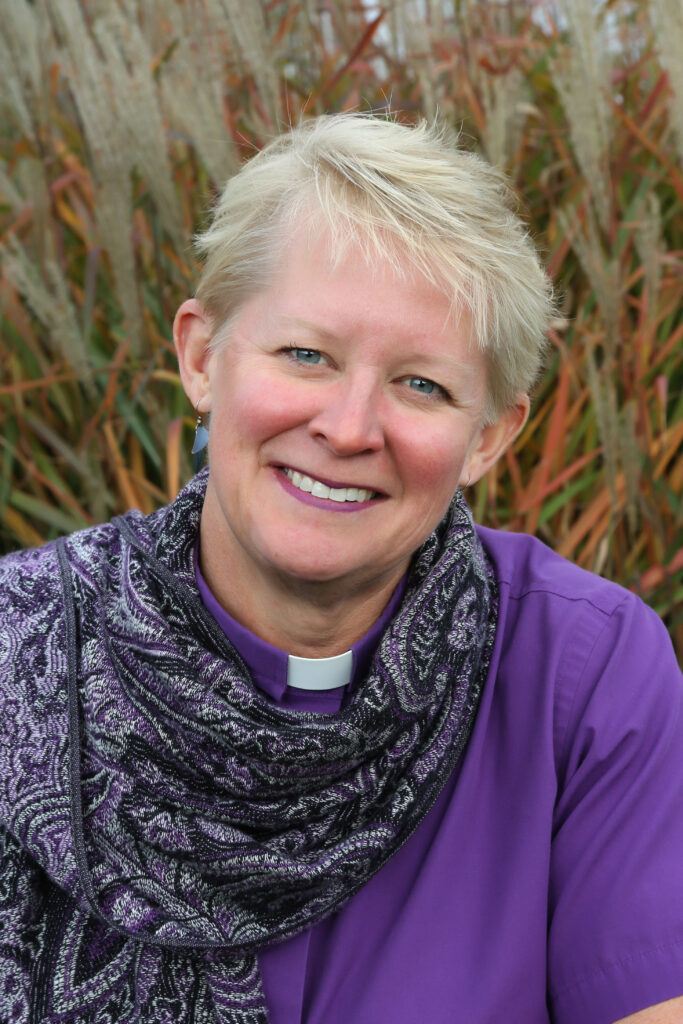BFST is the abbreviation for Bowen Family Systems Theory and BSFT always reminds me of the word ‘breakfast’. (I love a good breakfast).
I was having heightened anxiety as I navigated my way through a doctorate of ministry in preaching at Lutheran School of Theology in Chicago. Well into my second call, I found myself getting activated by one of the staff who would, in turn, talk to another staff person and my world would go upside down and backwards.
My advisor, Connie Kliengartner, now deceased, helped me learn about BFST, which I believe saved my life. Why do I believe that BFST saved my life? Well, because I was starting to have anxiety attacks; I was getting caught up in wicked triangles, and I was not functioning well. I honestly thought that it was my responsibility to quell the anxiety within the system I served.
As it turns out, the only way we can affect a system in a healthy way is to become more healthy ourselves.
What road did I take to get from “stressed to the max” to becoming a non-anxious presence? I read. A lot! I read authors specific to BFST: Roberta Gilbert, Israel Galindo, Peter Steinke, Murray Bowen, and Michael Kerr. Some books that I would recommend include Friedman’s Fables (written by Ed Friedman) and an outstanding primer on BFST by R. Robert Creech, Family Systems and Congregational Life: A Map for Ministry.
I also started to practice what I was learning with other students of BFST. And, I attended seminars through the Lombard Peace Mennonite Center in BFST. I learned that I needed to go back to my family of origin and work things out so that I did not carry over unhealthy patterns to the parish I serve. This also enabled me to begin to notice patterns in all sorts of systems: churches, schools, small and large government entities, and the like.
BFST has eight core concepts in its original form.
- Triangles.
- Differentiation of Self. Also known as Well Differentiation or Self Differentiation.
- Nuclear Family Emotional Process.
- Family Projection Process.
- Multigenerational Family Transmission Process.
- Emotional Cut-Off.
- Sibling Positioning – adopted from Walter Toman.
- Societal Emotional Process or Societal Regression.
- Michael Kerr added two more: The Unidisease.
- Supernatural Phenomena or Spirituality.
After leaning into BFST as a lifestyle, which as I stated above is also a practice, I started reading the work of Dr. Brené Brown, a social worker and professor. She has incorporated many of the concepts of BFST into her work, podcasts, books, and Ted Talks. She makes BFST accessible to a much broader audience; she puts handles on a theory that can be daunting and hard to understand at first glance.
B.R.A.V.I.N.G.
Brené Brown is a researcher and a storyteller who covers the topics of vulnerability, being in relationships of trust, and what it means to belong. Brown discovered one of the best tools that I have absorbed into the essence of my being and my call as an ELCA pastor. The acronym B.R.A.V.I.N.G.
B.R.A.V.I.N.G. is from several of Brené Brown’s most recent books. I use it in the parish I serve as a “buy in” for meetings, book clubs, and staff relationships. In fact, her terms have become so commonplace in our vocabulary around the church that people will pull me aside and say things like, “Pastor Jules, I need you to keep the vault on this…” My staff will say things like, “I need to set a clearer boundary with someone, can we talk about how to do that without hurting their feelings?” Also, when I am quick to make an assumption, I will ask myself, “Am I being nonjudgmental and generous right now?” (Usually, no. Bleh!)
BRAVING is one of the best tools I have found to build trust and healthy systems as we lead, wherever we lead.
BRAVING stands for:
BOUNDARIES, RELIABILITY, ACCOUNTABILITY, VAULT, INTEGRITY, NON-JUDGMENT, AND GENEROSITY.”
For Brené’s detailed definitions, go to: https://brenebrown.com/resources/the-braving-inventory/
Here’s how I understand each of the elements as seen through BFST.
BOUNDARIES: This is the entry point for all of the elements of BRAVING to work well. I need to know where I end and someone else begins. In the theory, there is language around what is called a togetherness force. This is when we get sucked into other systems, both family and multi-family systems, and we find ourselves losing ourselves. There is a balance to be aware of in the theory. How do I not get globbed-together with that togetherness force and group think? How do I maintain my individual self as I abide (or paraklete) with those I serve?
Here is where we have to know what we believe and what our core values are.
There’s also another aspect to keeping good, healthy boundaries. We need to function well. All of us have a tendency to either over-function or under-function. The truth is, when we over-function, over work, and over think, we are actually under-functioning. The opposite of that is true, too.
When I have good boundaries, I function better and I am much more of a non-anxious presence. I also live my own motto: Clarity is next to godliness, not cleanliness–although I recommend both.
RELIABILITY and ACCOUNTABILITY live in the same space for me. It’s a simple phrase that I use to sum up these two elements of BRAVING. “Say what you mean. Mean what you say. Follow through on what you said you were going to do.”
VAULT: We keep other things confidential. This element is essential to shutting down triangles. Triangles are everywhere. We see them in situational comedies, dramas, novels, and everyday life. There is no such thing as a stable dyad. A dyad is two people. There is always a third entity in relationships. It may be two people and a job; two people and a dog or child. We need triangles to diffuse our anxiety. That is something we learn in BFST. Where we get into trouble is when people pull us into their triangle. This happens all the time in church systems. As I mentioned above, when another person is talking about me instead of to me, I get anxious.
The remedy for unhealthy triangles is to keep the vault, keep confidence, and redirect the person to discuss issues face to face with the person they are having issues with. Note: not by email, text, meme, or phone. Face to face allows us to pick up on the nuance of body language. It allows us to say: I see you, I hear you, and you matter.
INTEGRITY: Within BFST this is called being “Well Differentiated”. As Christian public leaders we are called to be the beloved child of God that we already are and are becoming. This means that we are the same person at a church council meeting as we are on the tennis court. You get to be you. Everyone else is taken. We are not called to be shape-shifters, peace mongers, or willows in the wind, changing our opinion in order to make someone else happy. This takes courage. It is a practice and a lifestyle.
NON-JUDGMENT and GENEROSITY also live in the same camp for me. Maybe the person on the church council keeps bringing up scarcity within the stewardship campaign because they are dealing with their own financial history from the standpoint of the Multigenerational Family Transmission Process. Perhaps they came from poverty and cannot imagine ever having enough. Maybe they are doing the best they can be doing because of their past or their current situation. Using these two elements can not only help us stay out of judgment, they can also help us extend a generous spirit towards those who challenge us. Perhaps, challenging people are actually doing the very best that they can do in their present situation.
Non-judgment is also one of the more vulnerable parts of these elements because it is hard to ask for help. Sometimes it’s hard to speak your truth and ask for what you need, yet, if we have courage to enter into hard conversations in a meaningful and respectful and curious way, our lives become less anxious. I know, I have practiced this element. Some days I get it right, some days, not so much.
A practice and lifestyle
As I mentioned before, BFST is a practice and a lifestyle. So is BRAVING. In fact, as a student of BFST for the last twenty years, I have come to see that each of the seven elements listed above fit well within the eight to ten concepts of BFST.
BFST saved my life. I am continuing to work at being a Well Differentiated Leader, one who is non-anxious. When I started using BRAVING on a daily basis, my anxiety dropped, my work became more joyful, I became more playful, my relationships became more deeply loving and respectful, and, an added bonus, our parish became healthier. Regarding both theories, there is one last piece of the puzzle that I’ll leave you to consider: the more playful a system is, the healthier the system becomes.
Your turn
I use BRAVING for staff reviews. I also use BRAVING for the times when I feel out of step with someone or they are out of step with me. It’s a great tool and it makes BSFT much more accessible. I know BRAVING can help you, too!
Download a free e-book from Faith+Lead from a certified “Dare to Lead” facilitator, based on one of Brown’s most influential books and concepts.


